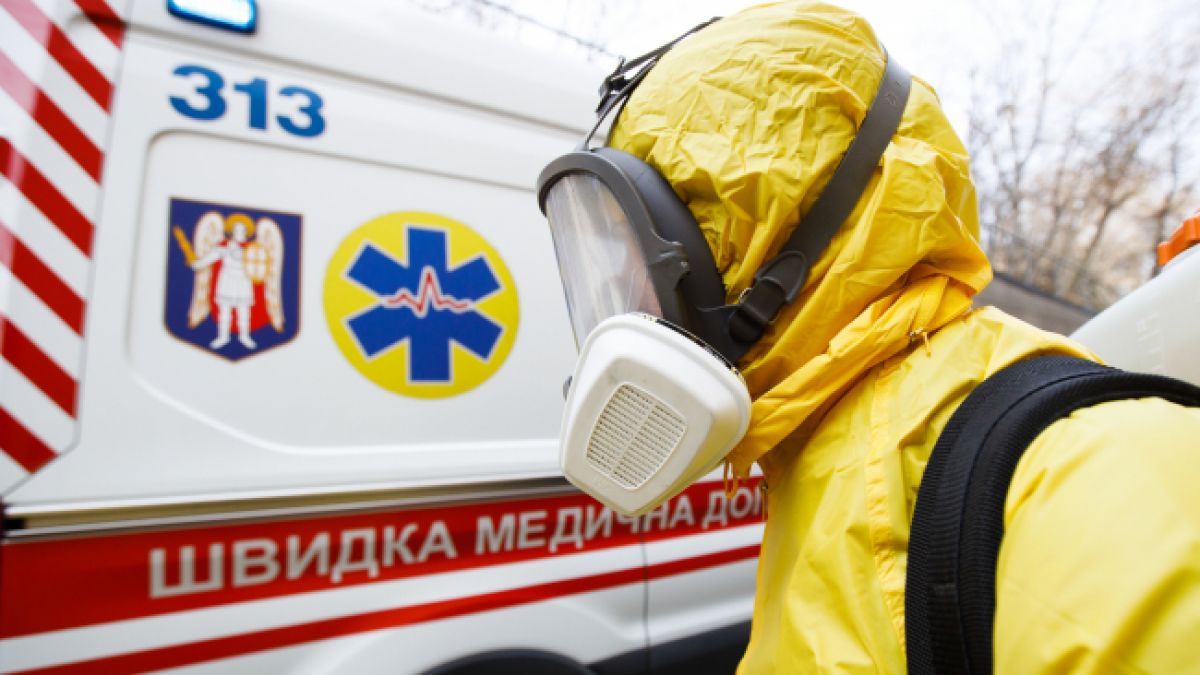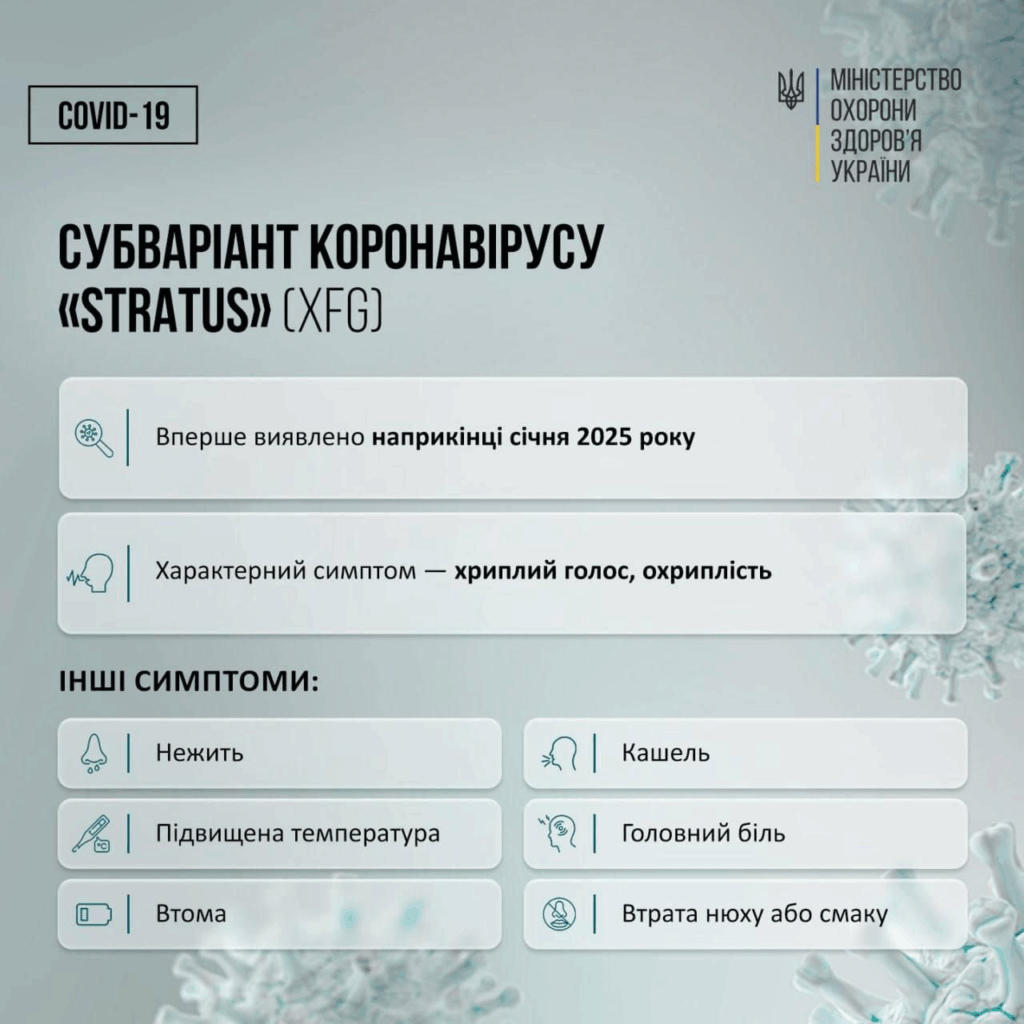Stratus coronavirus strain: will Ukraine have a new powerful COVID-19 epidemic?
21 August 20:02 EXCLUSIVE
EXCLUSIVE
In early August, a new variant of the coronavirus called Stratus was discovered in Ukraine. The disease started spreading across the country from Poltava region. On the morning of August 8, it became known that this variant of the coronavirus had already been detected in 8 regions. Among them:
- Vinnytsia region;
- Dnipropetrovska oblast;
- Zhytomyr region;
- Zaporizhzhia region;
- Chernihiv region.
Stratus was also detected in Kyiv.
On Wednesday, August 20, it became known that a patient died of coronavirus infection for the first time in a long time. It happened in the Lviv region. This was reported by the head of the regional Center for Disease Control and Prevention , Natalia Ivanchenko-Timko. She clarified that the deceased was about 60 years old and the man “had a number of diseases.
[Kommersant spoke with experts to find out how the new coronavirus variant affects human health, how fast it is spreading, and whether Ukraine is facing an epidemic in the near future.
COVID-19 outbreak in Kyiv: analysis confirms circulation of Stratus strain
The Chief State Sanitary Doctor of the capital, Director General of the Kyiv City Center for Disease Control and Prevention of the Ministry of Health of Ukraine, Serhiy Chumak, confirmed a significant jump in the incidence of COVID-19 in the capital. Over the past week, the level of confirmed cases has quadrupled compared to the previous week.
Thus, during the 32nd week (August 4-10), 176 cases of the disease were registered, while a week earlier there were only 145 cases. Among the patients are 152 adults and 24 children.

In general, compared to the same period in 2024, the number of cases in four weeks in 2025 was four times lower – 2,653 versus 10,805.
COVID-19 is all about laboratory-confirmed cases, and this is the indicator that is growing. This is not just an exacerbation of viruses,” explained Chumak.
The expert emphasized that the new virus is spreading faster and has a feature of affecting mainly the upper respiratory tract. The most common symptoms are hoarseness of the voice, runny nose, sore throat, general weakness, and fever.
This virus is spreading very quickly… the disease is easier to treat than the previous strains. People experience nasal congestion, tickling in the throat, and general symptoms such as fever and weakness,” stated Chumak.
Risk groups have not changed, and vaccination is still relevant
The expert emphasized that the elderly, children, pregnant women, and those with chronic diseases are particularly vulnerable to Stratus. If they are not vaccinated, the virus can complicate their condition and even be fatal.
If they (vulnerable categories of Ukrainians – ed.) are not vaccinated, they can get sick. And their chronic diseases can cause complications, and this can lead to death,” Chumak said.
“Fortunately, COVID vaccines are effective against the Stratus sub-variant, so the role of vaccination remains key.
How to protect yourself from the new coronavirus variant
The chief state sanitary doctor of the capital urged citizens not to neglect preventive measures. Serhiy Chumak advises:
- stay at home at the first symptoms of illness;
- seek help from a family doctor;
- do not forget to wear a mask in crowded places;
- ventilate the room regularly;
- do wet cleaning;
- use antiseptics to disinfect hands and surfaces.
COVID-19 sub-variant called Stratus: what is known about it
The pathogen belongs to the XFG genetic lineage, which the World Health Organization has included in the list of monitored variants.
Stratus was first detected in January 2025 in Southeast Asia. It originated as a recombinant of two sub-variants – LF.7 and LP.8.1.2, i.e. it contains mixed genetic material from both branches.
Stratus’s share of the world’s other strains increased from 7.4% to 22.7% in just one month, covering at least 38 countries. In the United States, the incidence of the disease reached 14%. Thus, the new coronavirus sub-variant became the third most common strain in the country. In the UK, the infection quickly replaced the previously dominant Nimbus.

The symptoms of Stratus are similar to previous coronavirus variants. They include cough, runny nose, fatigue, fever, and sore throat. A characteristic sign is hoarseness of the voice.
The WHO assesses Stratus as a variant with a low global risk. Available data confirm that existing COVID vaccines remain effective against symptomatic and severe disease. However, Stratus has mutations in its spike protein that help it partially evade immune defense.

Thus, Stratus (XFG) is a new sub-variant of Omicron that is spreading rapidly around the world but does not cause more severe disease than previous strains. It is characterized by hoarseness, but standard measures – vaccination, masks, hygiene – remain effective. WHO and national agencies continue to monitor its dynamics, watching for possible changes in pathogenicity or vaccine resistance.
Дивіться нас у YouTube: важливі теми – без цензури
COVID-19 incidence: context
COVID-19 is an infectious disease caused by the novel coronavirus SARS-CoV-2, which was first detected in late 2019 in Wuhan, China. The disease spread rapidly around the world, causing a global pandemic declared by the World Health Organization (WHO) in March 2020.
The coronavirus infection is transmitted by airborne droplets – through microscopic droplets that are released during coughing, sneezing, or talking. Infection is also possible through contact with contaminated surfaces.
Symptoms of COVID-19 range from mild to severe. The most common are fever, dry cough, fatigue, and loss of smell or taste. Other symptoms may include shortness of breath, muscle aches, headache, diarrhea, and sore throat. In severe cases, the infection can lead to pneumonia, acute respiratory distress syndrome, and death, especially among older people and those with chronic conditions (diabetes, cardiovascular disease, obesity, immunodeficiencies, etc.).
Read also: New COVID-19 Stratus strain in Ukraine: what a virologist says
Since the beginning of the pandemic, scientists and pharmaceutical companies have developed several effective vaccines against COVID-19 that significantly reduce the risk of severe disease and death. As of 2025, vaccination remains the main means of prevention, along with adherence to hygiene standards: wearing masks in public places, regular hand washing, and ventilation.
In 2023-2025, new variants of the virus – subvariants of the Omicron strain, including XBB, Kraken, Arcturus, and Stratus – will circulate. They are more contagious, but usually cause less severe disease.
COVID-19 has entered the endemic phase, meaning that it remains among the population as a persistent infection, similar to influenza. Nevertheless, epidemiologists continue to monitor new mutations and urge not to ignore preventive measures.
Читайте нас у Telegram: головні новини коротко









